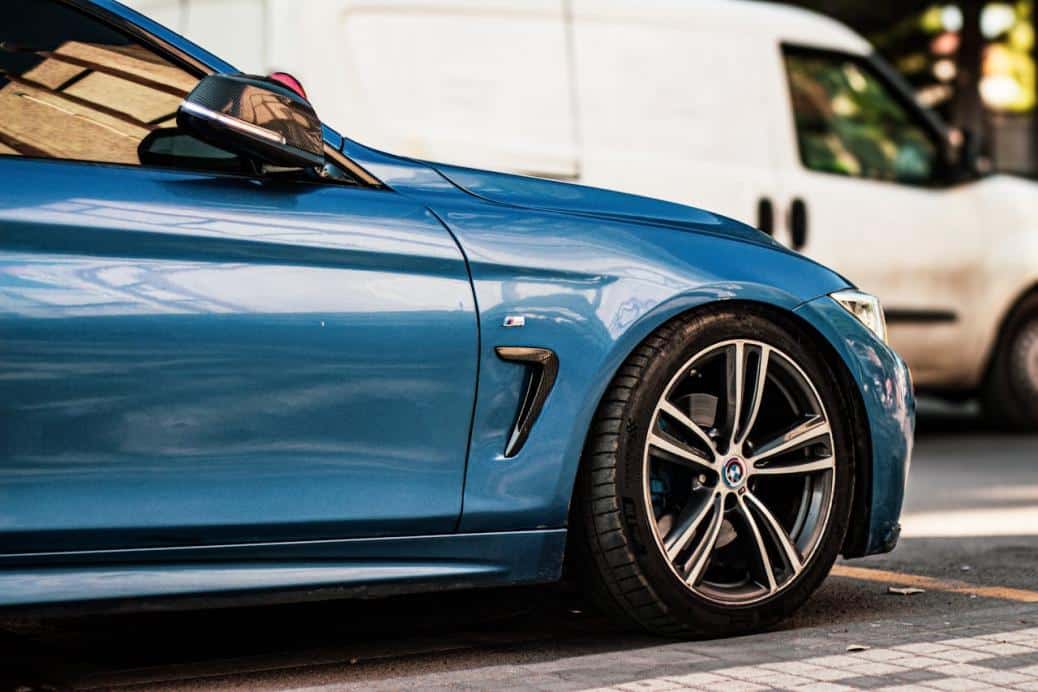0 items - £0.00
No products in the basket.

If you are a true petrol head, you probably don’t dream about having a regular and convenient car for casual trips to the grocery store. You are probably thinking about carbon fiber, even in places that don’t make sense, aggressive body kits, tuning, 3 stage tuning, and a loud exhaust.
Most of us, regular people, won’t race our cars or even get close to their top speed. But that doesn’t mean that it doesn’t make sense to have a more powerful car or an aerodynamic body kit.
Competitive environments and professional moto sports like F1, NASCAR, and many others influence custom vehicle design even on regular cars. When you look at it, carbon fiber was firstly introduced in Formula 1, but now it is in every high-end car you can imagine.
But how exactly does competition shape custom vehicle design? Well, it’s not just about who can bold on the biggest spoiler like the Manthey GT3 RS one or squeeze the biggest turbo. It’s deeper. In fact, competitive pressure often pushes both aesthetics and performance to evolve hand-in-hand, creating machine that don’t just look good, but are also really fast.
When you are in a competitive arena, or just a regular moto gathering in your community, nobody tries to blend in. In fact, it is quite the opposite. Everyone wants to stand out.
That’s why the custom vehicle scene is full of wild paint jobs, engine covers made from gold, aggressive body kits, and head-turning exhausts. In most cases, these after-market tunes on the car don’t serve any purpose. They are just there to look good. After all, the cars look so good that most owners put PPF on them.
Still, true petrol heads dig even deeper and build cars that are more aerodynamic, can corner better, and can squeeze more power from the engine.
We all know that in the car world, if your car looks good that’s an added horsepower, even if the spoiler at the back is purely cosmetic. But some parts also make the driving part different. For example, wide body kits, allow for wider tires, which improves grip during high-speed cornering, hood scoops and vents allow fresh air in the engine, which results in more power, and spoilers at the back add downforce improving grip which also results in faster times.
But where are these upgrades coming from? Well, it is not like car enthusiasts have access to their own wind tunnel where they test their body kits. They come from competitive racing sports like NASCAR, F1, even 24/h Le Mans.
In the world of racing, wind is both a challenge and an opportunity. That’s why competitive vehicles are often built in wind tunnels (or at least designed with wind-tunnel data). Spoilers, diffusers, splitters—all those funny-looking appendages aren’t there just for style points. They manipulate airflow to reduce drag, increase downforce, and keep the car glued to the ground at high speeds.
The goal? Well, air helps the car maneuver better and more efficiently transfer the power from the engine to the wheels. The end goal is to create a car that will look good and go around the track faster.
It’s just like horse racing, where there aren’t many kits that will help a horse go faster, but training here is like tuning in the car world. Speed is crucial in sports like horse racing, which is why people are always digging deeper, trying to find the next winning horse to place their money on.
If you want to learn more about horse racing betting, which is kind of similar to moto racing, click the link below: twinspires.com/edge/racing/betting-info/horse-racing/
Custom vehicle builders in competitive environments have to think like engineers and artists at the same time. That delicate balance between pushing air and pushing limits is where truly iconic designs are born. It’s the reason why Formula 1 cars look like sci-fi darts and why drift cars have exaggerated angles and flared fenders.
Here’s the thing about building for competition: it’s not about comfort. It’s about shaving seconds, gaining grip, and reducing risk. So, a lot of what you see in competitive custom cars is purely utilitarian—lightweight materials, roll cages, stripped interiors. Carbon fiber replaces leather. Weight savings take precedence over cup holders. This intense focus on function creates a raw, purposeful aesthetic that can be more beautiful than any luxury car.
Even the engine bay—often a hidden world in daily drivers—is treated like an art exhibit in the custom racing scene. Why? Because under that hood lives the soul of the machine, and in a competitive setting, it’s the difference between podiums and breakdowns. Big turbos, race-tuned exhausts, upgraded cooling systems—these modifications speak the language of speed and survival.
One of the less visible ways competition influences design is through data. In modern racing or performance arenas, telemetry is everything. How much grip did the tires have in Turn 4? Was the car too loose in high-speed corners? These questions are answered with numbers—and those numbers directly influence the next round of modifications.
Custom builders working in competitive spaces live in a feedback loop. Race, analyze, adjust. That iterative process pushes vehicles to evolve with almost scientific precision. Every loss is a learning opportunity, every tweak a possible edge.
It’s not just performance metrics that drive custom design—it’s culture. The environment itself shapes the vibe. For example, in the time-attack scene, clean lines and aggressive stances dominate. In the drag racing world, you’ll find short wheelbases and rear tires the size of truck donuts.
And in drifting, style matters just as much as score—expect bold liveries, neon under glow, and loud personalities to match the sideways action.
So, did you tune your car based on a motorsport? Let us know in the comments.

Development Office, Unit 211 East London Works, London, E1 1DU
© 2017 3Dom Wraps | Terms & Conditions | Privacy
Created with love @ 